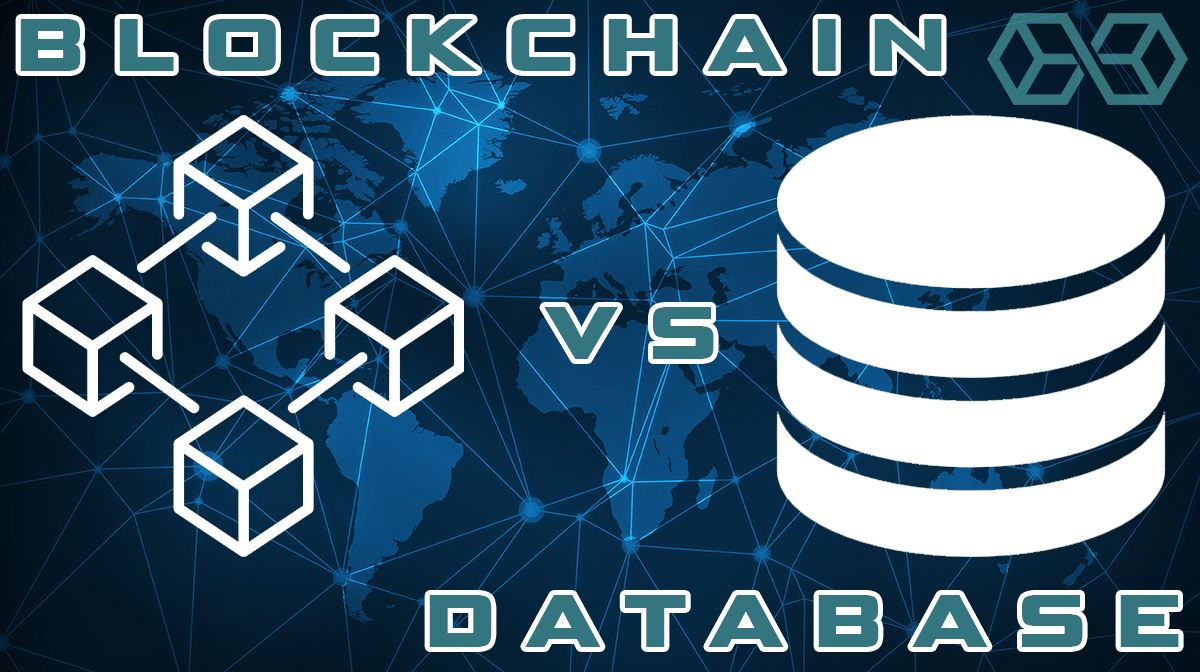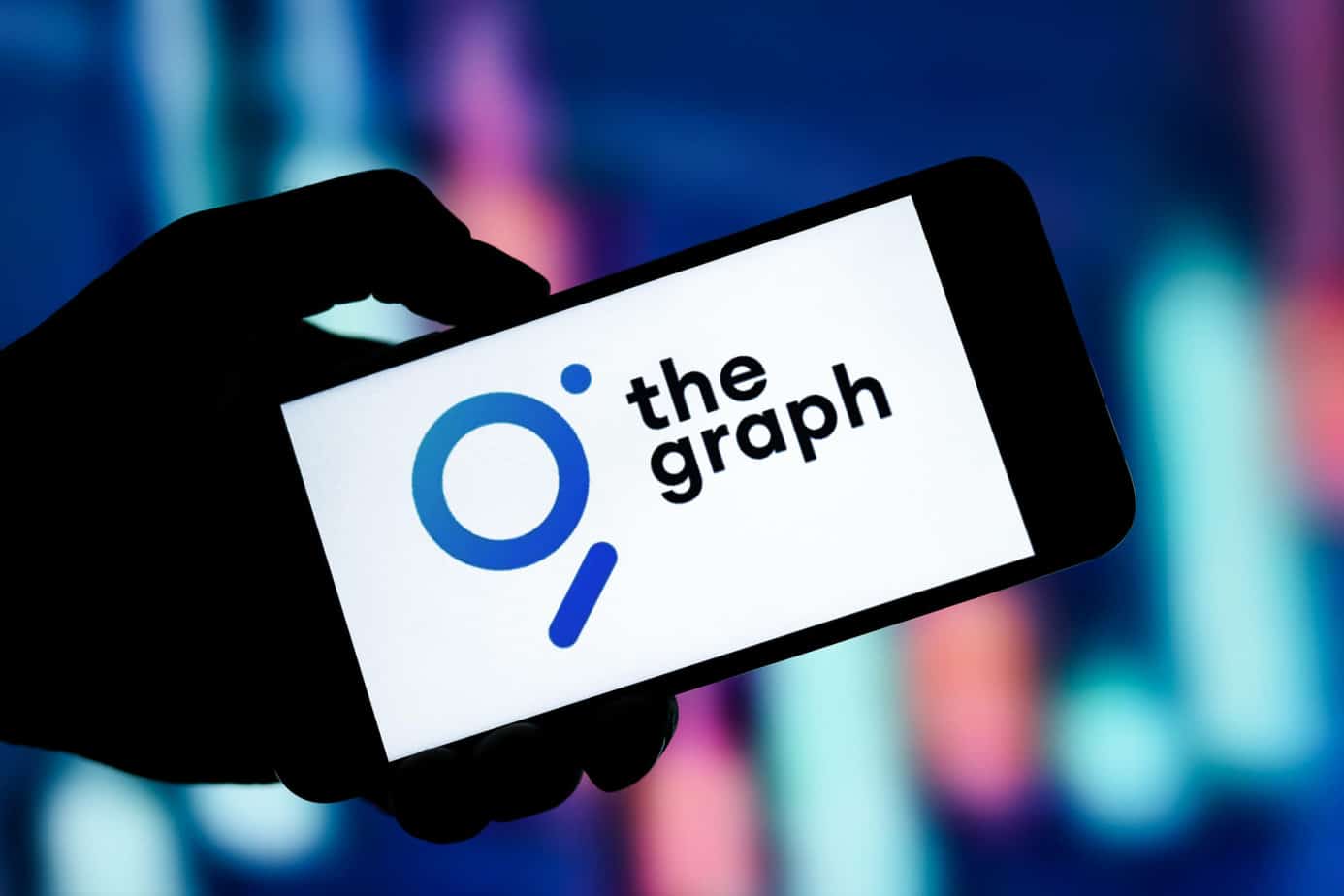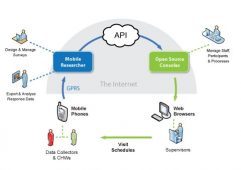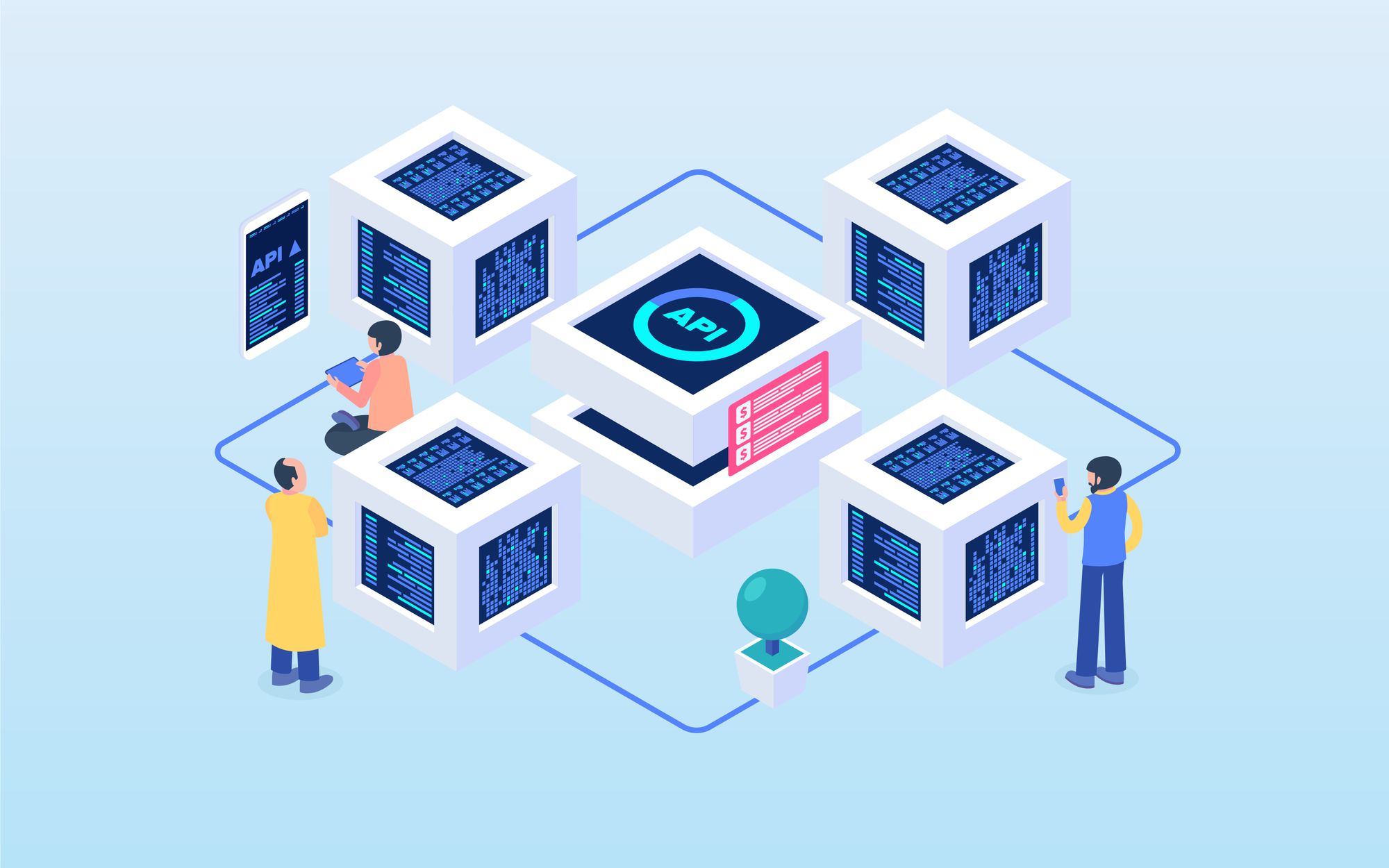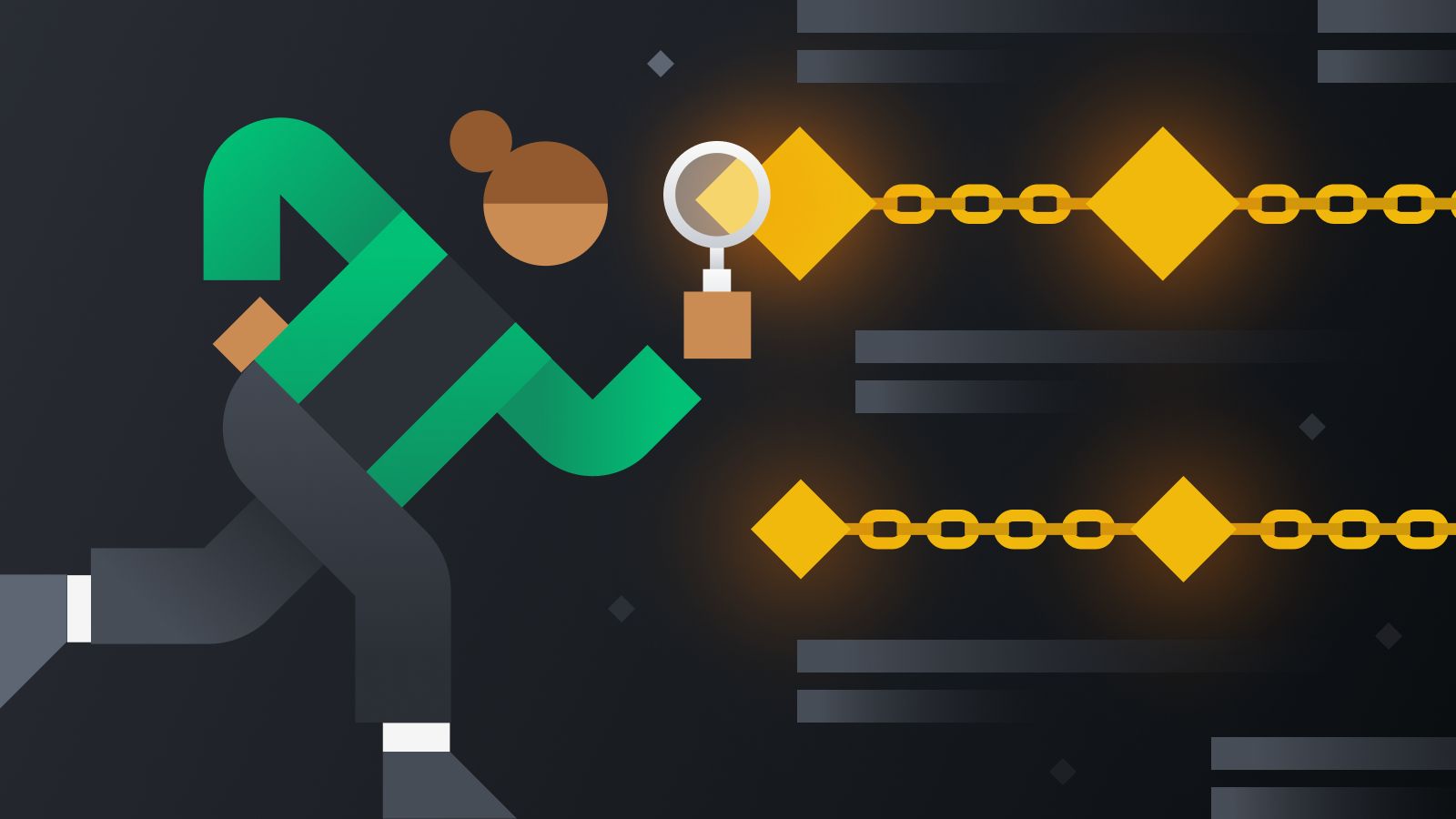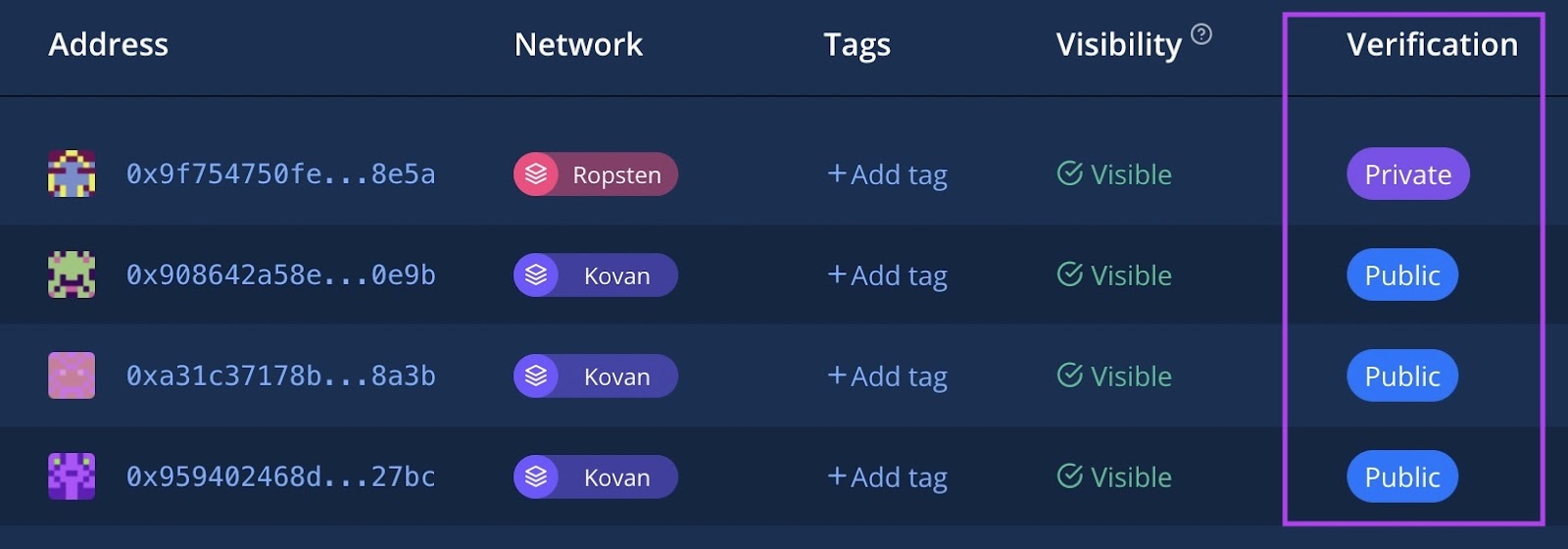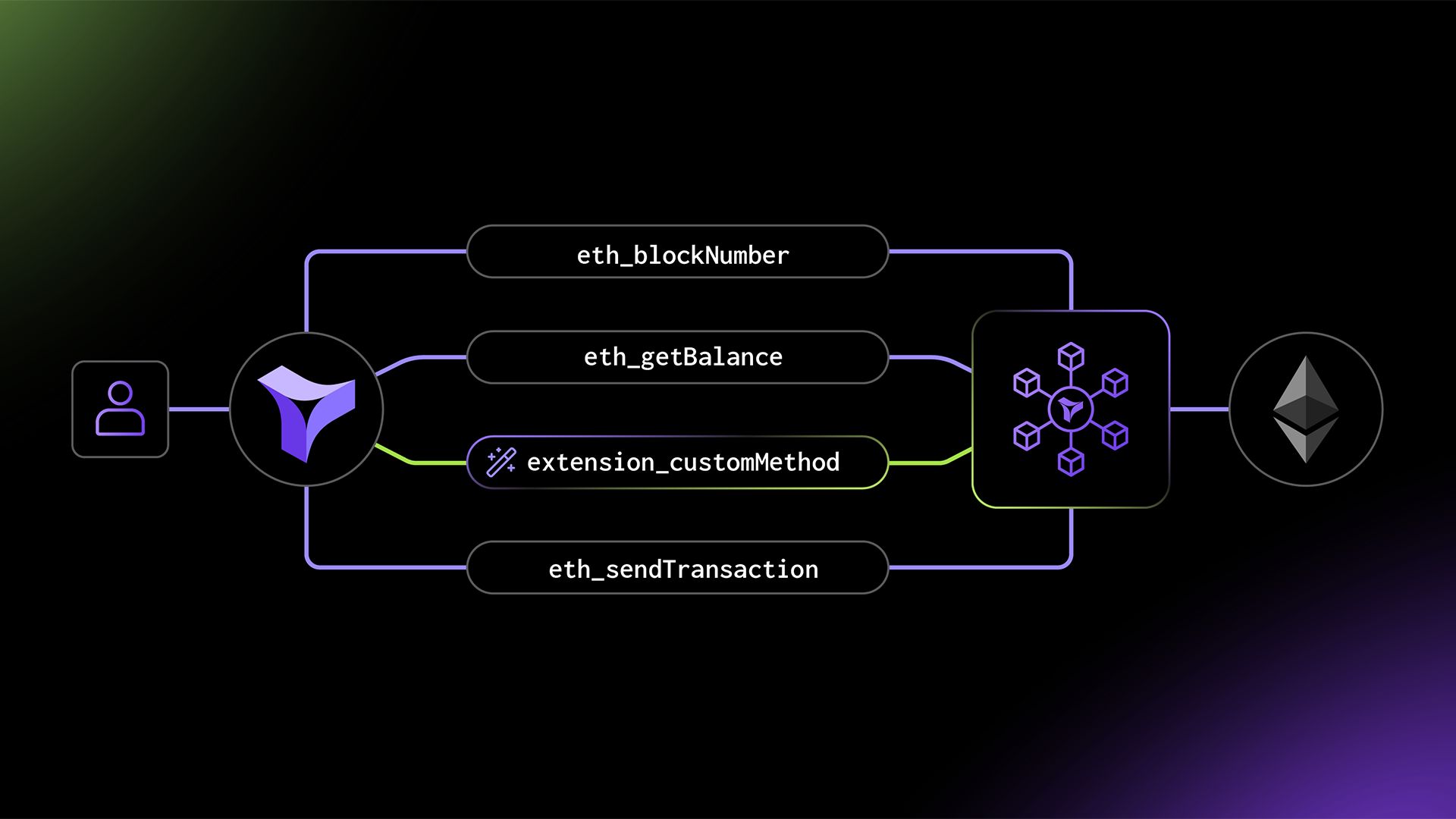Introduction
Welcome to the exciting world of blockchain data! As the popularity and adoption of blockchain technology continue to grow, so does the need to access and query blockchain data for various purposes. Whether you are a developer building decentralized applications or a data analyst looking to gain insights from blockchain data, understanding how to effectively query and manipulate this data is crucial.
Blockchain data refers to the information stored within a blockchain network, which typically includes transactions, smart contracts, and other relevant metadata. It is immutable, transparent, and decentralized, making it a valuable resource for various industries, such as finance, supply chain, and healthcare.
In this article, we will explore the process of querying blockchain data and provide you with the essential knowledge to get started. We will cover topics ranging from choosing the right blockchain API to advanced querying techniques for analyzing and filtering data. By the end of this article, you will have a solid understanding of how to extract meaningful information from blockchain networks.
Before diving into the technical aspects of querying blockchain data, it is important to note the importance of selecting the right blockchain API. A blockchain API acts as a bridge between your application and the underlying blockchain network, allowing you to interact with and retrieve data from the blockchain. There are various blockchain APIs available, each with their own unique features and capabilities. It is crucial to select an API that matches your specific needs in terms of blockchain network compatibility, data availability, and developer support.
Once you have chosen the appropriate blockchain API, the next step is to set up your development environment. This typically involves installing any necessary software or libraries and configuring your API credentials. With your environment properly configured, you are ready to start making basic queries to retrieve blockchain data.
In the following sections, we will explore different ways to query blockchain data, including filtering and sorting data, retrieving historical data, and handling large datasets. We will also cover more advanced topics, such as leveraging indexes for performance and analyzing blockchain data using various tools and techniques.
So, whether you are a blockchain enthusiast or a developer looking to work with blockchain data, this article will serve as your comprehensive guide to querying and manipulating blockchain data. Let’s dive in and unlock the endless possibilities that lie within blockchain networks.
Understanding Blockchain Data
Before delving into the specifics of querying blockchain data, it is essential to have a clear understanding of what constitutes blockchain data and how it is structured.
At its core, a blockchain is a distributed ledger that records a chronological series of transactions or other data. Each block contains a collection of these transactions and is linked to the previous block, forming a chain of blocks. This decentralized and transparent nature of blockchain makes it highly secure and resistant to tampering.
Blockchain data consists of various elements, including:
- Transactions: These are the fundamental units of data stored on a blockchain. Each transaction represents a transfer of assets or information between participants within the network.
- Blocks: Blocks are the containers that hold multiple transactions. They serve as a way to group transactions and ensure their integrity by linking to the previous block in the chain.
- Addresses: An address in a blockchain context is a unique identifier for a participant within the network. It is used to send and receive assets or information.
- Smart Contracts: Smart contracts are self-executing agreements with predefined rules written in code. They enable the automation and execution of specific actions when certain conditions are met.
- Metadata: Metadata refers to additional information associated with transactions or blocks. This can include timestamps, transaction fees, public keys, and more.
Understanding the structure and components of blockchain data is crucial for effectively querying and extracting meaningful insights from it. Each blockchain network has its own data schema and specific details about how transactions and blocks are structured. Therefore, it is important to familiarize yourself with the documentation and specifications of the particular blockchain network you are working with.
Furthermore, it is worth noting that blockchain data is often stored in a decentralized manner across multiple nodes or computers within the network. This distributed nature ensures redundancy, fault tolerance, and immutability of the data. However, it can also introduce challenges when querying and retrieving data from the blockchain.
By understanding the fundamentals of blockchain data, you can gain a better grasp of its potential applications and make informed decisions when querying and analyzing it. In the following sections, we will explore various techniques and tools to efficiently query blockchain data, allowing you to unlock the insights hidden within the blockchain.
Choosing the Right Blockchain API
When it comes to querying blockchain data, selecting the right blockchain API is crucial. A blockchain API acts as a gateway that enables developers to interact with the underlying blockchain network and retrieve data. With so many blockchain APIs available, it is essential to consider several factors to choose the one that best suits your needs.
Here are some key points to consider when selecting a blockchain API:
- Blockchain Network Compatibility: Different blockchain APIs support various blockchain networks, such as Bitcoin, Ethereum, or other custom-built networks. Ensure that the API you choose is compatible with the specific blockchain network you are working with.
- Data Availability and Coverage: It is important to verify that the API provides access to the types of data you require. Some APIs offer comprehensive access to transaction data, smart contract information, and other metadata, while others may have limitations or specialize in specific data sets.
- Developer Support and Documentation: Look for APIs that have well-documented resources, including tutorials, guides, and sample code. A robust support system can greatly simplify the development process and troubleshooting.
- Rate Limits and Scalability: Consider the rate limits imposed by the API, as well as its scalability. If you anticipate a high volume of queries or require real-time data updates, ensure that the API can handle your expected workload without compromising performance.
- Data Integrity and Security: Verify the measures taken by the API provider to ensure the integrity and security of the data. Encryption, authentication, and access control mechanisms are vital considerations to protect sensitive blockchain data.
- Cost and Pricing Structure: Evaluate the pricing options and plans offered by the API provider. Consider factors such as the number of requests allowed, additional features, and potential hidden costs to determine the most cost-effective solution for your project.
By carefully evaluating these factors, you can choose the blockchain API that aligns with your specific requirements and development goals. It is also worth considering the community and reputation surrounding the API provider, as active developer communities can provide valuable support and resources.
Keep in mind that different APIs may have different approaches to accessing and querying blockchain data. Some may provide a RESTful API, while others may offer libraries and SDKs for popular programming languages. Consider your familiarity with these tools and choose the one that best suits your expertise.
Once you have chosen the appropriate blockchain API, you are ready to set up your development environment and start making queries to retrieve and analyze blockchain data. In the following sections, we will dive into the specifics of querying blockchain data using the selected API, enabling you to unlock its full potential.
Setting Up the Development Environment
Before you can start querying blockchain data, it is essential to set up your development environment. This involves installing any necessary software or libraries, configuring your environment variables, and obtaining the required API credentials. Setting up your development environment ensures that you have the necessary tools and resources to interact with the blockchain network and retrieve data effectively.
Here are the key steps to set up your development environment:
- Choose Your Programming Language: Determine the programming language you will be using to write your queries. Most blockchain APIs support popular programming languages such as Python, JavaScript, or Go.
- Install Dependencies: If your chosen programming language requires any third-party libraries or SDKs to interact with the blockchain API, install them. Refer to the API documentation for any specific dependencies or requirements.
- Obtain API Credentials: To access and query blockchain data using the API, you will typically need to obtain API credentials, such as an API key or secret. Each API provider has its own process for registering and obtaining these credentials. Follow the documentation to acquire the necessary credentials.
- Configure Environment Variables: Once you have your API credentials, it is a best practice to store them securely as environment variables. This helps to keep your credentials separate from your code and ensures that sensitive information, such as API keys, are not exposed in your source files.
- Test Your Setup: Write a simple test script or query to verify that your development environment is correctly set up. This can involve making a basic query to retrieve sample blockchain data to validate that your API credentials are working and that the necessary dependencies are installed correctly.
It is important to follow the instructions provided by the API documentation to ensure that your development environment is properly configured. The API documentation typically includes detailed steps and examples to guide you through the setup process and make it as straightforward as possible.
Additionally, consider using a version control system, such as Git, to track your code changes and collaborate with other developers if necessary. Version control allows you to manage different versions of your queries and easily revert to a previous state if needed.
With your development environment set up and ready to go, you are now equipped to start querying the blockchain data. In the next sections, we will explore different types of queries and techniques to retrieve and analyze blockchain data, empowering you to extract valuable insights from this decentralized and transparent technology.
Making Basic Queries
Once you have set up your development environment, you are ready to start making basic queries to retrieve blockchain data. Basic queries allow you to gather essential information from the blockchain, such as transaction details, block information, or specific data associated with addresses or smart contracts.
The process of making a basic query typically involves sending an HTTP request to the blockchain API endpoint with the appropriate parameters. The API responds with the requested data in a structured format, such as JSON or XML, which you can then parse and extract the relevant information.
Here are some common types of basic queries you can make:
- Retrieve Transaction Details: You can query the blockchain for specific transaction details by providing the transaction hash or identifier. This allows you to retrieve information such as the sender and receiver addresses, transaction value, gas fees, and other relevant metadata.
- Get Block Information: By specifying the block number or hash, you can fetch details about a specific block on the blockchain. This includes information such as the list of transactions contained within the block, the timestamp of the block’s creation, and the block’s unique identifier.
- Query Address Information: With an address as input, you can retrieve associated data, including the balance of tokens or coins held by the address, the list of transactions involving the address, and any relevant metadata associated with it.
- Fetch Smart Contract Data: If you are working with smart contracts, you can query specific contract details by providing the contract’s address. This allows you to retrieve the contract’s bytecode, its function signatures, and other relevant information.
When making these basic queries, it is important to handle errors and ensure proper error handling in your code. The API may return error responses in case of invalid input or other issues, and it is crucial to handle these errors gracefully and provide appropriate feedback to the user or log any errors for further investigation.
Additionally, consider implementing caching mechanisms to optimize query performance and reduce the overall load on the blockchain API. Caching can help store frequently accessed data locally, improving response times and minimizing unnecessary queries to the API.
As you gain familiarity with the basic querying process, you can start experimenting with different parameters and options provided by the API. These options may include filtering data based on specific criteria, sorting data based on certain fields, or limiting the number of results returned. Understanding and utilizing these options can help you fine-tune your queries and retrieve the most relevant data for your needs.
By mastering the art of making basic queries, you will be able to gather crucial information from the blockchain and lay the foundation for more advanced querying techniques. In the next section, we will explore how to filter and sort blockchain data, allowing you to extract even more valuable insights from the vast amount of information stored within the blockchain network.
Filtering and Sorting Data
As the amount of data stored within a blockchain network grows, it becomes essential to filter and sort the data to extract meaningful insights efficiently. Filtering allows you to narrow down the data based on specific criteria, while sorting enables you to arrange the data in a desired order. The ability to filter and sort data is crucial for analyzing blockchain data effectively.
When querying blockchain data, most blockchain APIs provide parameters and options that allow you to filter and sort the results. Here are some common ways to filter and sort blockchain data:
- Filter by Address: You can filter blockchain data based on specific addresses. This allows you to retrieve transactions or other data associated with a particular address, providing insights into the activities of a specific individual or entity within the blockchain network.
- Filter by Timeframe: Filtering by timeframe allows you to retrieve data within a specific range of timestamps. This is useful to analyze data within a particular period or track changes over time.
- Filter by Transaction Type: Blockchain transactions can differ in type, such as normal transfers, contract creations, or specific operations within smart contracts. Filtering by transaction type enables you to focus on a specific subset of transactions that meet your criteria.
- Filter by Smart Contract Events: If you are working with smart contracts, you can filter data based on events emitted by the contract. This allows you to retrieve specific events and associated data, providing insights into the behavior of the smart contract.
- Sort by Field: Sorting enables you to arrange the retrieved data based on specific fields. For example, you can sort transactions by timestamp, transaction value, or any other relevant field. Sorting helps you analyze the data in a structured and meaningful way.
By combining filters and sorting options, you can query the blockchain for data that meets your specific criteria and arrange it in a desired order. This flexibility allows you to perform targeted analysis and gain valuable insights from the vast amount of blockchain data.
It is worth noting that depending on the blockchain API you are using, there may be additional filtering and sorting options available. Explore the API documentation to understand the full range of options and parameters provided by the API.
When filtering and sorting data, it is crucial to consider the performance implications. Querying large amounts of data or applying complex filters may impact the response time of your queries. Be mindful of the resources required and optimize your queries as necessary to ensure efficient retrieval of filtered and sorted data.
Now that you have a sound understanding of filtering and sorting data, you are equipped to explore the vast possibilities of analyzing blockchain data. In the next section, we will dive into retrieving historical data, enabling you to gain insights into the blockchain’s past activities and trends.
Retrieving Historical Data
Retrieving historical data from a blockchain is crucial for understanding the past activities and trends within the network. Historical data provides valuable insights into the evolution of the blockchain, allowing you to analyze patterns, track changes over time, and conduct in-depth research.
When querying a blockchain for historical data, there are several approaches you can take:
- Query by Block Number: You can retrieve historical data by specifying the block number or height. By querying blocks in chronological order, you can explore the transactions and other data stored within each block to gain a comprehensive understanding of the blockchain’s history.
- Retrieve by Timestamp: Another approach is to retrieve historical data based on the desired timeframe using timestamps. This allows you to explore a specific period and analyze the transactions and events that occurred during that time.
- Access Block Explorers: Block explorers are web-based tools that provide an interface for browsing and retrieving historical data from a blockchain. These explorers allow you to search for specific transactions, blocks, or addresses and provide additional features such as visual representations and statistics.
- Utilize Historical APIs: Some blockchain APIs offer specific endpoints or methods to retrieve historical data. These specialized endpoints allow you to fetch historical data in a more structured and efficient manner, providing a granular level of control over the data retrieval process.
Retrieving historical data from a blockchain can be a resource-intensive process, especially for popular and heavily utilized networks. Therefore, it is important to consider the performance implications and optimize your queries as necessary. Applying filters, limiting the number of results, and leveraging caching mechanisms can help streamline the retrieval process and enhance query performance.
Additionally, when working with historical data, it is crucial to ensure that the data is reliable and accurate. Blockchain networks undergo occasional updates, forks, or reorganizations that can impact historical data. It is important to account for these factors and cross-validate the data from different sources or blockchain explorers to ensure consistency.
By effectively retrieving and analyzing historical data, you can gain valuable insights into the past activities and trends within the blockchain network. This data can be utilized for various purposes, such as conducting research, identifying patterns, or making informed decisions based on historical trends.
In the next section, we will explore the topic of handling large datasets, enabling you to efficiently manage and query blockchain data at scale.
Handling Large Datasets
Dealing with large datasets is a common challenge when working with blockchain data. A blockchain network can store a massive amount of data, including transactions, blocks, and associated metadata. Efficiently handling large datasets is crucial for performing analysis, extracting insights, and optimizing the querying process.
Here are some strategies for effectively managing and querying large datasets:
- Implement Pagination: When fetching large amounts of data, it is advisable to implement pagination techniques. Instead of retrieving all data in a single query, you can divide it into smaller “pages” and fetch them incrementally. Pagination helps minimize response times, reduces the load on the API, and improves overall query performance.
- Use Batch Processing: In scenarios where you need to retrieve a significant number of records, utilizing batch processing can be beneficial. Batch processing involves sending multiple requests simultaneously or in parallel, allowing you to fetch data in batches and process them efficiently.
- Apply Filtering and Aggregation: Filtering and aggregating data can help reduce the dataset’s size, making it more manageable. By applying specific filters or grouping data based on key criteria, you can narrow down the dataset to the relevant information before further analysis or processing.
- Utilize Off-Chain Data Storage: Storing some blockchain data off-chain can help alleviate the burden of handling large datasets. Off-chain databases or distributed file storage systems can be used to store and retrieve data that is less frequently accessed, reducing the complexity and cost of querying the blockchain directly.
- Optimize Query Performance: Consider implementing performance optimization techniques such as indexing. Indexing can speed up query execution by creating data structures that allow for faster data retrieval based on specific fields or criteria.
It is essential to assess the specific requirements of your project and optimize your querying approach accordingly. This might involve a combination of the strategies mentioned above and considering the capabilities of your chosen blockchain API.
Additionally, keep in mind that performance and query optimization may vary based on the blockchain network you are working with. Public blockchains with a large number of participants and high transaction volumes may have different considerations compared to private or permissioned blockchains with smaller datasets.
By employing effective strategies for handling large datasets, you can efficiently manage and query blockchain data at scale. This enables you to extract valuable insights and make informed decisions based on the vast amount of information stored within the blockchain network.
In the next section, we will explore the topic of managing pagination, which is an essential technique when querying large datasets effectively.
Managing Pagination
When dealing with large datasets in blockchain querying, managing pagination is crucial for efficient data retrieval. Pagination involves breaking down the dataset into smaller, manageable chunks or “pages” and retrieving them iteratively to avoid overwhelming the API and optimize query performance.
Here are some key considerations for managing pagination:
- Define Page Size: Determine the number of records or data items you want to retrieve in each page. The page size depends on your specific needs and the limitations set by the API provider. It is important to find a balance between fetching enough data to minimize the number of API requests and not overwhelming the system or violating any rate limits.
- Use Pagination Parameters: Most blockchain APIs provide pagination parameters to control the retrieval of data. These parameters typically include the page number or offset and the page size. By specifying the appropriate values for these parameters, you can fetch data in a controlled and systematic manner.
- Perform Initial Request: Start by making an initial request to retrieve the first page of data. Set the pagination parameters accordingly to fetch the desired number of records.
- Process and Store Data: Once the data is retrieved, process and store it in a suitable data structure or storage system. This allows you to perform further analysis or manipulate the data efficiently.
- Iterate through Pages: Using a loop or recursive function, iterate through the remaining pages of data by updating the pagination parameters in each subsequent request. Continue fetching and processing each page of data until all desired records are retrieved.
- Handle Error and Empty Responses: Take into account the possibility of empty or incomplete responses in your pagination logic. If an API request returns an empty page, you can consider it as the endpoint for pagination and stop the iteration process accordingly. Additionally, handle any errors or exceptions that may occur during the pagination process, ensuring proper error handling and feedback to the user.
Managing pagination enables you to retrieve large datasets in a controlled and systematic manner. It prevents overwhelming the API, reduces the potential for errors, and allows for efficient data processing and analysis.
It’s worth noting that pagination techniques may vary slightly depending on the specific pagination parameters and methods provided by the blockchain API you are working with. Consider consulting the API documentation for any specific guidelines or limitations regarding pagination.
Incorporating pagination management into your querying workflow allows you to handle large datasets effectively, ensuring smooth retrieval of blockchain data and empowering you to extract valuable insights from the vast amount of information stored within the blockchain network.
Next, we will delve into performing advanced queries, enabling you to dive deeper into the complexities of querying and analyzing blockchain data.
Performing Advanced Queries
Performing advanced queries goes beyond basic and straightforward data retrieval by incorporating more complex and powerful techniques. Advanced queries enable you to gain deeper insights, customize data extraction, and uncover hidden patterns within the blockchain data.
Here are some techniques for performing advanced queries:
- Advanced Filtering: Advanced filtering involves combining multiple criteria to create intricate queries. You can use logical operators (e.g., AND, OR) to refine your filters and retrieve highly targeted data. This allows you to narrow down the dataset and focus on specific combinations of conditions that are relevant to your analysis.
- Aggregate Functions: Using aggregate functions, you can perform calculations and statistical analyses on blockchain data. These functions allow you to summarize and derive insights from the data, such as calculating average transaction values, identifying maximum or minimum values, or analyzing trends over time.
- Joining Data: Joining different datasets allows you to combine information from multiple sources or tables. This is particularly useful when working with blockchain data that may be spread across different tables or collections, enabling you to link relevant data and perform comprehensive analysis.
- Temporal Queries: Temporal queries involve querying data based on specific time periods or intervals. This allows you to analyze blockchain data dynamically, observing changes and trends over time. Temporal queries are particularly valuable for monitoring blockchain activities, tracking historical patterns, and identifying anomalies.
- Complex Sorting: Advanced sorting techniques enable you to arrange data based on multiple fields or custom criteria. This can help you analyze relationships between different data points, prioritize results based on specific conditions, or derive valuable insights by exploring the data from different angles.
- Optimizing Query Performance: Advanced queries can be resource-intensive, especially when working with large datasets. It is important to optimize query performance by leveraging techniques such as indexing, caching, or using specialized data storage systems to ensure efficient retrieval and analysis of the data.
Performing advanced queries allows you to harness the full potential of blockchain data analysis. By combining various querying techniques, you can explore complex relationships, uncover trends and patterns, and gain a deeper understanding of the underlying blockchain network.
It’s important to note that the availability and capability of advanced querying options may vary depending on the chosen blockchain API and its supported features. Make sure to consult the API documentation or resources provided by the API provider to understand the full range of advanced querying capabilities and best practices.
With advanced querying in your toolkit, you are equipped to delve into the intricate details of blockchain data and unlock valuable insights that can drive informed decision-making and innovative solutions.
In the next section, we will explore leveraging indexes for performance to further enhance the efficiency of your queries and analysis.
Leveraging Indexes for Performance
When working with large datasets in blockchain querying, leveraging indexes is a powerful technique for optimizing query performance. Indexes enable faster data retrieval by organizing the data in a highly structured manner, which allows the database to locate and access the desired information more efficiently.
Here’s how you can leverage indexes to enhance the performance of your queries:
- Identify Key Fields: Analyze your data and determine which fields are often used in queries or involved in filtering, sorting, or joining operations. These key fields should be considered for indexing, as they are commonly used to access or manipulate the data.
- Create Indexes: Once you have identified the key fields, create indexes for those fields in your database or storage system. Indexes are data structures that store references or pointers to the actual data, allowing for efficient retrieval based on the indexed fields.
- Consider Unique and Composite Indexes: Depending on your specific use cases, unique indexes and composite indexes can further optimize query performance. Unique indexes ensure that the indexed field values are unique across the dataset, enabling faster lookup and eliminating duplicate data. Composite indexes involve multiple fields and are useful when performing queries that involve multiple criteria or combinations of conditions.
- Regularly Update and Maintain Indexes: As your data evolves and grows, it is important to keep your indexes up to date. This includes regularly updating the indexes to reflect any changes in the data and ensuring that the indexes remain optimized for query performance.
- Benchmark and Optimize: Monitor the performance of your queries and analyze the query execution plans provided by your database or storage system. Benchmarking and analyzing these plans can help identify areas where query performance can be improved. Consider optimizing the query structure, modifying the indexes, or adjusting the database configuration based on these insights.
Leveraging indexes is particularly useful when working with blockchain data, where large and complex datasets are often involved. By strategically indexing the relevant fields and managing the indexes, you can significantly enhance the efficiency of your queries and reduce the time it takes to retrieve the desired data.
However, it is important to note that indexes come with some drawbacks. They consume additional storage space and may slightly impact insert and update operations as the indexes need to be maintained. Therefore, it is vital to carefully evaluate and balance the benefits of indexes against the potential trade-offs for your specific use case.
By leveraging indexes for performance, you can optimize the retrieval of blockchain data, expedite data analysis, and unlock valuable insights in a more efficient manner. This empowers you to effectively process large amounts of data and make informed decisions based on the vast information stored within the blockchain network.
In the next section, we will explore techniques for analyzing blockchain data, enabling you to extract even deeper insights and uncover hidden patterns within the data.
Analyzing Blockchain Data
Analyzing blockchain data allows you to extract valuable insights, discover patterns, and gain a deeper understanding of the underlying blockchain network. By employing various techniques and tools, you can uncover hidden relationships, track trends, and make data-driven decisions based on the wealth of information stored within the blockchain.
Here are some techniques for analyzing blockchain data:
- Data Visualization: Utilize data visualization techniques to present blockchain data in a visual format. By creating charts, graphs, or interactive visualizations, you can enhance the understanding and interpretation of the data. Visualizations help uncover patterns, identify outliers, and communicate complex information in a more accessible manner.
- Statistical Analysis: Apply statistical methods to analyze blockchain data and derive insights. Techniques such as regression analysis, correlation analysis, or hypothesis testing can be used to uncover meaningful relationships and identify statistical patterns within the data.
- Network Analysis: Analyze the network structure of the blockchain to identify key entities, measure their influence, and discover clusters or communities within the network. Network analysis helps explore the relationships between addresses, transactions, and other entities, offering insights into the connectivity and behavior of participants in the blockchain ecosystem.
- Machine Learning: Employ machine learning algorithms to analyze blockchain data and identify patterns or predict future trends. Machine learning techniques, such as clustering, classification, or anomaly detection, can help uncover hidden patterns, detect fraudulent activities, or make predictions based on historical data.
- Sentiment Analysis: Apply sentiment analysis techniques to analyze textual data associated with the blockchain, such as transaction remarks or smart contract interactions. Sentiment analysis allows you to gauge public opinion, track sentiment trends, and identify significant events or activities within the blockchain network.
- Time-Series Analysis: Perform time-series analysis to study the behavior and trends of blockchain data over time. Time-series analysis enables you to detect seasonality, trends, or anomalies within the data, aiding in forecasting or identifying significant events that impact the blockchain network.
The choice of analysis techniques depends on your research objectives, available data, and the specific questions you seek to answer. It is important to select the most suitable techniques for your analysis goals and ensure that the results are interpreted in a meaningful and accurate manner.
As with any analysis process, it is important to validate and verify the findings. Cross-checking results, applying appropriate statistical significance tests, and considering alternative explanations help ensure the reliability of the analysis outcomes.
By employing advanced analysis techniques, you can explore the intricacies of blockchain data, uncover valuable insights, and make data-informed decisions. The ability to analyze blockchain data enables you to leverage the power of this decentralized technology and derive actionable intelligence from the vast amount of information stored within the blockchain network.
In the next section, we will summarize the key points covered in this article, reinforcing the importance of effectively querying and analyzing blockchain data.
Conclusion
Effectively querying and analyzing blockchain data is essential for unlocking valuable insights, understanding trends, and making informed decisions within the blockchain ecosystem. From understanding the structure of blockchain data to choosing the right blockchain API, setting up the development environment, and performing basic and advanced queries, each step plays a significant role in harnessing the potential of blockchain data.
Filtering and sorting data allow for efficient data retrieval, while retrieving historical data provides a deeper understanding of the blockchain’s past activities and trends. Handling large datasets and implementing pagination techniques ensure the smooth management and querying of large volumes of blockchain data.
Performing advanced queries and leveraging indexes enhance query performance, enabling more complex analysis and uncovering deeper insights. Analyzing blockchain data using techniques such as data visualization, statistical analysis, network analysis, machine learning, sentiment analysis, and time-series analysis allows for a comprehensive exploration of the data.
It is crucial to select the right tools and techniques based on the specific requirements of your project, as well as the capabilities and limitations of the chosen blockchain API. Regularly maintaining and optimizing your development environment, staying up to date with advancements in blockchain technology, and continuously exploring new analysis techniques will further enhance your ability to extract meaningful insights.
By effectively querying and analyzing blockchain data, you can unlock the wealth of information stored within the blockchain network. This empowers you to make informed decisions, drive innovation, and uncover transformative opportunities within various industries such as finance, supply chain, healthcare, and more. Continually expanding your knowledge and skills in this domain will position you at the forefront of the blockchain revolution and enable you to harness the true potential of this transformative technology.









